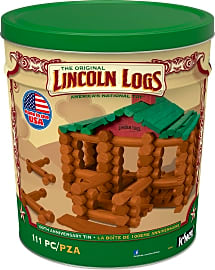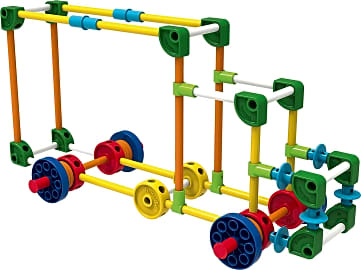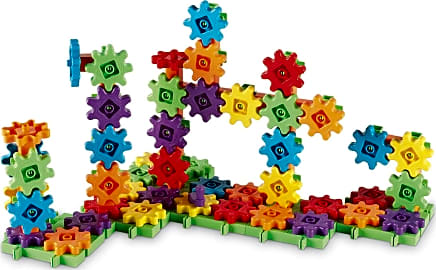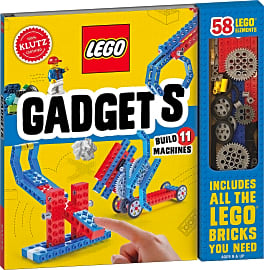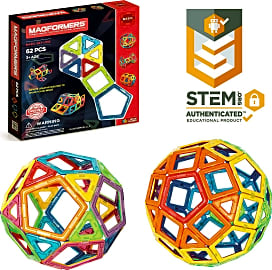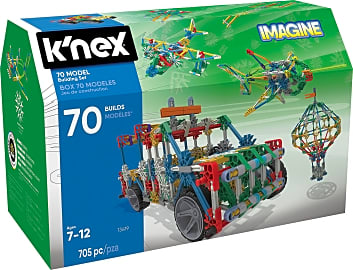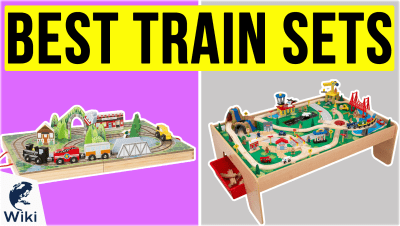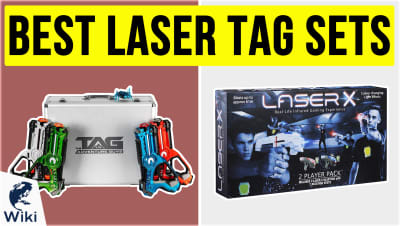The 10 Best Kids Building Sets

This wiki has been updated 37 times since it was first published in September of 2015. No matter how many technologically advanced electronic toys come out, it seems kids always enjoy building sets. Each of the selections featured here is great for boosting hand-eye coordination, critical thinking, problem solving, and STEM skills. Since these kits often contain small parts and magnets, be sure to follow the manufacturer’s age guidelines, and supervise children for a safe playtime. When users buy our independently chosen editorial selections, we may earn commissions to help fund the Wiki.
Editor's Notes
March 03, 2020:
Three popular sets come on board in this update. Klutz Lego Gadgets is a book-based set that comes with a 78-page guide and 58 building bricks, gears, and connectors. It includes instructions for creating 11 machines, including a gravity-powered car, a boxing robot, a claw, a catapult, and a gravity drop coaster. It also comes with open-ended prompts to help you experiment with your own original designs.
Many of us have fond memories of playing with Lincoln Logs as a child. The Lincoln Logs Original features the same sturdy maple pieces in rich colors, with the square-notched design for stacking. This set comes with 111 all-wood pieces, along with instructions for three building ideas: a tall tower, two small houses with a bonfire, and one large cabin. Along with the brown logs, included are forest green and muted red ones to form the slats and façade for the roof, along with a chimney. This set commemorates this toy’s 100th anniversary, and everything comes in a high-quality tin for neat and convenient storage.
The Magformers Basic set features flat squares, triangles, and pentagons with open middles, which makes them easy for little hands to pick up and maneuver. Each piece contains rare earth magnets that never reject, so they’ll click together nicely every time. They come in an array of vibrant colors and can be used to build a ball, a house, a cube, a pyramid, a snail, a turtle, and more.
These sets replace the MindWare Keva Contraptions, which features lightweight pieces that often do not survive the slightest of bumps, when stacked; the Magz-Bricks 60 piece, which is rather pricey, for what you get; and the Roylco Straws & Connectors, which don’t always stay together securely, once connected.
No matter which selection you go with, make sure your child is within the specified age range, as many building sets come with both small parts and magnets, which can be dangerous if ingested. As a rule, always supervise children with their toys for a safe playtime.
Special Honors
Uncommon Goods Electric Light Blocks This illuminated set of interlocking construction blocks comes in a set of 36 or 102, and will inspire endless creativity in both kids and grown-ups. Just add them to the base, which can be powered by battery or USB, and each one lights up once it’s connected. They make for a handy nightlight, and you can form them into a colorful skyscraper, a glowing robot, or wherever your imagination takes you. uncommongoods.com
Relating Spaces
There is no better time to work at developing the skills and ingrained quality of spacial reasoning than at a young age.
A tremendous amount of our daily lives depends on the quality of our spacial reasoning. Every time you unexpectedly twist an ankle, miss a curb or a step; bump into walls, tables, door frames, and more, it's usually the result of a lapse in spacial awareness.
In more concerted cases, overpacking a suitcase to the point where it won't close, trying to fit four people in a two person tent while camping, and other silly examples illustrate ways in which a gap in your spacial reasoning can come back to bite you.
The brain is a plastic thing, which is to say that it's constantly learning and evolving. But the vast majority of your brain's development occurs within the first few years of life, with a kind of diminishing return as you age and pass on through puberty and into adulthood. There is no better time to work at developing the skills and ingrained quality of spacial reasoning than at a young age.
The building sets on our list, even as they entertain your kids with hours of creativity, exploration, and the occasional thrill of destruction, will all also help to solidify important concepts that will help them down the line. Not every kid who picks up a building set will go on to be a mathematician with a specialty in geometry, or become the next Frank Lloyd Wright, but he or she will undoubtedly have an advantage in those fields in school and in life.
Builders And Creators
There's a pretty stark divide among kids when it comes to building sets. Most kids will own either of the two primary set categories, but in their hearts there's really only room for one style, and knowing which kind they prefer will just about cleave our list in twain before you begin to consider other variables.
Those two primary categories are the free-builders and the designed builders. I know free-builders sounds a little bit like Freemasons, but I don't mean to imply that these are the kids destined to preside over the world order by the force of the their invisible hands. I mean that their sets aren't meant to be any one thing.
The blocks and pieces in free-builder sets aren't meant to be put together like a model in any particular manner.
The blocks and pieces in free-builder sets aren't meant to be put together like a model in any particular manner. They leave the end product open-ended, preferring instead to engage your child's imagination from the ground up. Design builders do just the opposite. They usually come with a small pamphlet of instructions, and your child will follow this flow to the letter and eventually emerge with a well-built, finely crafted item, like a truck, boat, or building.
It's impossible to say which style provides the better educational experience. The lessons that a design can teach a child about the importance of pre-planning and patient execution of a specific task are invaluable. So, too, are the revelations of the creative imagination when something that wasn't necessarily supposed to be anything suddenly becomes something recognizable and exciting.
In a perfect world, perhaps your child would spend equal amounts of time with either kind of building set, though that might make for a boy or girl who is a jack of all trades, master of none. What matters is that you tune into what their preferences would be, so that if you buy them a box of bricks with no instructions they'll actually put it to use, or if you get them a set to make some fancy trucks they won't just tear the instructions up and build whatever they want.
The only other major variable to consider in your purchase is the relevant age for each set. Some of the sets on our list are clearly intended for younger groups of children, while others are far too complicated for a younger age bracket to comprehend. Each set has its specific age recommendation, and those are usually right on the mark.
A Building Boom At The Turn Of The Century
The building block has been a popular children's toy since long before an industry for children's toys existed. As far back as the late 17th century, there are mentions of square, lettered blocks very much akin to alphabet blocks, the modern precursors to the sets on our list.
The building block has been a popular children's toy since long before an industry for children's toys existed.
It wasn't until the early 20th century that more complicated building sets became popular among children. Very early in the century, on an expedition to Japan with his father who had designed the Imperial Hotel in Tokyo, John Lloyd Wright invented a toy architecture set based on the model pieces his father was using to create his designs. This set would go on to take the name Lincoln Logs, after the construction of Abraham Lincoln's cabin in Illinois.
At around the same time, Alfred Carlton Gilbert and his Mysto Manufacturing Company patented and began to market a steel construction set for young boys interested in architecture. He called the sets Erector, and their popularity exploded almost instantly.
A little over a decade later, a wooden toy workshop in Denmark began to produce interlocking blocks of various rectangular lengths and colors. The Lego Company eventually switched from wooden pieces to plastics, and their success has been consistent for nearly a century.


